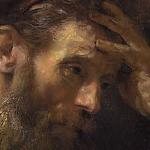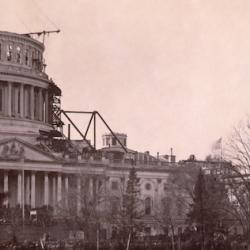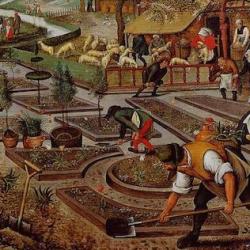The late nineteenth and early twentieth centuries witnessed, Charles Taylor argues, the development of the “nova.” At that time, “the alternatives open to unbelief are multiplied and enriched.” After World War II, these options are diffused to the whole of Western societies, and this produces a “super-nova” (A Secular Age, 377).
These options arose out of the “cross pressure” that is inherent in Western culture after the Enlightenment. On the one hand, the notion of an impersonal, mathematical order to the world leads to an experience of flatness and emptiness; on the other hand, these very themes encourage people to explore ways of “thickening” their worlds.
Victorian culture, Taylor says, fuses national, religious, and moral concerns. It produces a moralist ethic, disciplined individuals. Those who feel this is restrictive attempt their own experiments in living.
Taylor observes, importantly, that these responses to the flattening of experience don’t necessarily take traditional religious forms. Art is a primary “thickener” that delivers moderns from the ugliness and calculation of capitalist society. As a result, art takes on a religious aura in modernity, a path to human flourishing, but a path that remains “secular,” wholly on the immanent plane.
The Bloomsbury group plays a role here. Taylor thinks Bloomsbury more radical and most groups or movements because it offers an alternative ethic that poses a “serious amendment to the reigning ethic” (404).
The ethic is derived from the work of G.E. Moore, the philosophical guru of the Bloomsberries. According to Moore, the only truly god things are personal relations and beautiful states of mind. In Taylor’s terms, “friendship and honest strong feelings are major goods.” Noel Annan summarized the ethic by city Virginia Woolf’s conviction that “you should detect exactly what you felt and should then, having realized what sort of person you were, live up to it” (quoted 405).
Everything else must be measured by how they promote or inhibit these intrinsic goods. That produces, in one sense, a “conservatism” that leaves much of the Victorian “ethic of decency, the structures of law and freedom, many of the disciplines, and much of the the institutional framework” in place. Keynes can be Bloomsbury to the core, a disciple of Moore, and yet spend his life in government (405).
Yet even while it preserved elements of the Victorian ethic, it undermined other aspects. Taylor says that “by not being radical, Bloomsbury was in a sense all the more subversive.” Even when the Bloomsberries lived like run-of-the-mill Victorians, it was on a different basis with a different aim: “the spirit which they advocated was poles apart from the ethic of disciple and manliness, which were very much taken as goods in themselves. Discipline yes, but only where it conduces to friendship and beautiful states of mind. In this way, they dismantled, by downgrading and rendering conditional, great parts of the reigning synthesis: its religion was utterly sidelined, it sexual ethic was declared bankrupt, its patriotism was severely chastened, most of its conventions were mocked” (405).
The subversion of the Victorian ethic was especially evidence in the Bloomsbury opposition to World War I. While other Victorians (say, Rupert Brooke) marched off with dreams of masculine glory, some Bloomsberries actively opposed the war (Lytton Strachey) while others simply checked out of the war fever. Great public events like the war were tested by Moore’s ethic, and found wanting.
Perhaps Bloomsbury’s most important legacy was its assault on alleged Victorian philistinism and chauvinism. When Virginia Woolf announced the “on or about December 19120 human nature changed,” she was referring to the post-Impressionist exhibition organized by Roger Fry. The exhibition targeted Bloomsbury’s two enemies simultaneously: It brought in avant garde art to combat philistinism, and it brought it in from France! (405).
Taylor fits Bloomsbury into two “vectors” of change during the period. The group “advanced on the vector of authenticity, prizing the individual self-expression of each person in their difference from others” and “radicalized the claims of ordinary human sensual desire against the supposedly ‘higher’ demands of discipline and abstinence” (406). They further immanentized goods – not merely to the “secular” realm but to the inner realm of human feeling. In these ways, “they helped set the climate of the latter half of the [twentieth] century, in England and elsewhere” (406).
The backstory is important. Virginia Woolf, and her sister Vanessa Bell, were daughters of the “godless Victorian,” Leslie Stephen. Their revolt was “a revolt within a revolt”: “The father rebels against Victorian faith, largely because it seems so much less humane than humanism, but keeps the ethic and discipline. The daughters then rebel against this, but don’t revise the original judgment of religion.” They go further in rejecting Christianity by defining humanness, in part, as sexual freedom (406).
Taylor finds Bloomsbury at times “irritatingly precious and reductive.” Strachey’s assault on eminent Victorians isn’t witty but “reductive and trivializing.” But Bloomsbury leaves the modern West, especially Britain, with a dilemma: On the one hand, the “larger realities” are used to justify mayhem on a horrific scale (World War I); on the other, deflating the larger realities brings us back to the flattened and empty experience that many were trying to escape. This is the dilemma: How can we restrain the dangers of “big ideas” without trivializing life?












